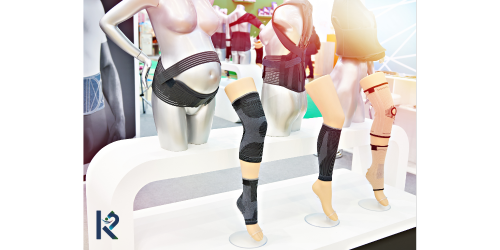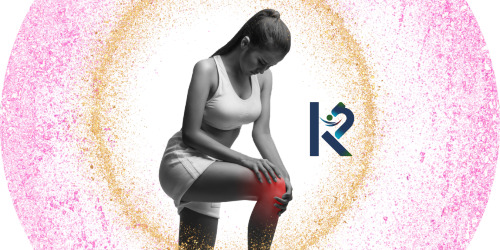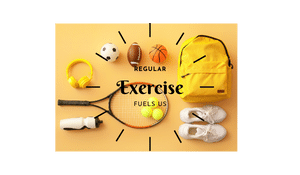In previous blogs we’ve discussed the benefits of Knee Compression Support Braces, we’ve also taken a look at some of the best exercises to improve knee strength through various workouts and stretches. So it’s only right to take a deeper look into the science that supports these ideas. Here science meets comfort, and your body can benefit from the VIP treatment it deserves! In this blog let’s dive into the intriguing realm of compression wear to explore the science behind its effectiveness. Uncovering the multitude of ways it can enhance the quality of your life. It doesn’t matter whether you are an athlete, or someone who simply wants to feel better during your daily hustle. Let’s Kloc-In together to understand the wonderful world of compression support.
The Basics of Compression Support:
Let’s start from the top, compression support is most commonly linked to athletic wear. It is not just limited to squeezing into tight outfits. It is a science-backed approach to enhancing performance, preventing injuries, and promoting overall well-being. The magic lies in the graduated pressure these outfits exert on specific body parts, forming a snug yet comfortable fit that can aid in blood circulation and muscle support. Compression support is known to create the compression required while understanding when to release that compression, for example as it gets to the heart. For instance you may find that your knee compression is nice and tight and as the blood flows towards your heart there is a release to ensure there is balance.
There are many aspect of compression therapy including:
- Apparel
- Medical treatments
- Intensity and duration
- Types of compression support
To ensure its effectiveness make sure you monitor the level of comfort felt and well as speaking with healthcare professionals for the best application.
Boosting the Blood Flow:
One of the top benefits of compression support is the productive impact on blood circulation. Imagine your circulatory system as a busy motorway, with blood as the vehicles carrying essential nutrients and oxygen to various destinations in your body. Compression wear acts as the traffic controller, promoting a smooth flow and preventing congestion. Through improved circulation better oxygen is delivered to the muscles. This then has a trickle effect as you then speed up recovery, and increase overall performance. To go into this further compression wear puts gentle pressure where needed for example to the veins, which help the blood vessel innate capacity to circulate blood.
Muscle, Meet Support:
Compression wear isn’t just all about how sleek it looks; if used correctly they are your muscles best friends. The compression provided by these items of clothing can significantly reduce muscle vibration during movement, providing support and stability. When you look at high-intensive activities there are many benefits. This includes the prevention of excessive strain on the muscles, as well as decreasing the risk of injuries. See compression as a bodyguard that is there to protect your muscles. The goal is to keep you at your best most if not all of the time. If you didnt know it's great to understand that while performing physical activities the muscle vibrates, this vibration can lead to fatigue and potential injury. The knees are a great example of the vibration created while doing intensive activity. So finding the right compression brace will benefit you in the long run. As compression support aides in stabilising, and reducing muscle oscillation through the support offered.
The Lactic Acid Myth:
Have you ever heard about compression wear aiding in lactic acid removal? While this doesn't cure everything, compression support can assist in minimising the build-up of lactic acid, which is a repercussion of intensive exercise. If you were to ameliorate circulation and provide muscle support, compression wear can contribute to the efficient removal of metabolic waste, potentially reducing muscle soreness. The next time you go to the gym try a compression support brace for your knees for example and use it as your tool against post workout blues. It is important to understand that compression apparel doesn’t completely eradicate lactic acid, it can be a tool used to minimise the effects. Which in turn improves overall circulation which again helps to remove metabolic waste.
Compression Fashion - Not Just for Athletes:
Compression wear can be utilised by more than just gym connoisseurs. You’ll find that nowadays compression wear can be part of your daily life. If you look at compression socks for people who work in the office sitting down constantly, this type of fashion comes in very handy. You may even find leggings stylish for the weekend, in this weather though maybe stick under a pair of jeans as it is very cold! These items are more than just athletic wear and can be used to enhance comfort and reduce the amount of vibration that takes place in the muscles. Compression wear can seamlessly blend with your fashion sense while working wonders on your body.
Compression for Edema:
Compression therapy is commonly used for managing edema, edema is a medical term that refers to the abnormal accumulation of fluid in the interstitial spaces. These are adjoined to the cells in the body’s tissue. Considered a type of fluid that builds up which can cause swelling, in areas like your legs, ankles, and feet. There are some clear causes including:
- Fluid Retention
- Inflammation
- Venous Insufficiency
- Lymphatic Obstruction
- Certain Medication
- Pregnancy
Adopting compression apparel can be an effective way to reduce edema especially in cases of venous insufficiency and lymphedema.
Research Obtained - Compression Support:
In a study summarised by Daylong - Compression Guides where research amongst Flight Attendants was performed, confirmed that light level support and compression tights aided in meaningful decrease in overall tiredness, aching and swelling. This same study also indicates that it actually helps to prevent post-thrombotic syndrome which is a condition that affects people with deep vein thrombosis of the leg. Post-thrombotic syndrome can cause chronic pain and swelling in the legs.
Compression therapy is a medical approach which applies pressure to a specific area of the body. This advanced technique allows blood to flow through the body while reducing swelling. This compression therapy is often used for conditions such as lymphedema, edema which is fluid retention, venous disorder, chronic pain, plus more. Compression apparel has a number of variations including sleeves, wraps, braces, etc. Although there are many benefits expressed regarding compression support, with everything there comes some challenges. A good example is finding the best compression support for your individual needs. So if you want to utilise compression support for the basis of exercise you may require something different to if you are using it on a day to day basis because of work constraints. If you don't have the correct type of compression as discussed by Wounds UK in a section titled challenges of compression therapy, then you may find it uncomfortable. There are some great suggestions by Wound UK which will help you further understand compression support.
Fact or Fiction - Debunking Compression Myths:
There are common myths we hear when discussing compression wear. It is not designed to be uncomfortable, more like designed to be snug while allowing your body to breathe. It should actually be comfortable. Compression appeal will not solve all your issues overnight, however it can provide you with a way to increase longevity, and support in your recovery process. Understanding the benefits of compression simply allows you to select the best compression for you, sizes, as well as when best to incorporate in your daily life. A fun fact is that compression wear can help to regulate the body's temperature. Its snug thermal design keeps the muscles warm which again prevents injuries and helps improve performance.
In another finding from NCBI they state that more research may be required to be able to categorically express that compression support improves kinetic kinematic outcomes. It also suggests that the likelihood for reducing muscles in oscillatory is positive, but highlights its disbelief in the effects in metabolic responses. The likelihood of compression apparel having a negative effect is limited, but to confirm the best solution for you it may be worth contacting a doctor or physician.
It is fair to say that compression support is not just a trend; it’s backed by science and a great remedy for anyone searching for improved performance, reduced recovery times, and better overall wellbeing. The benefits are endless, like blood circulation to provide quality muscle support. The benefits as mentioned are not limited to just gym goers, but can be utilised by those who sit down a lot, maybe you do office work and are on your desk for most of the day. It is important to be aware that this alone may not be the answer but there are some great findings that confirm that it is worth adopting the right type of compression support to help regulate your body’s temperature, improve blood flow and reduce the recovery time if you exercise frequently. Try incorporating compression support in your day to day and see what you draw as benefits.




